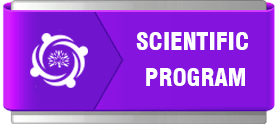
Biography
Biography: Mahtab Karimi
Abstract
Introduction: Ovarian hyperstimulation syndrome (OHSS) is rather frequent (1-5%) in women submitted to superovulation with gonadotropins for in vitro fertilization (IVF). Multiple pregnancy, gestational trophoblastic disease, primary hypothyroidism, thyroid-stimulating hormone/gonadotropin-secreting adenomas, and mutations of the FSHR gene may trigger spontaneous OHSS.
Purpose: Aim of the study is to investigate the incidence, progress, management and outcome of adnexal torsion after controlled ovarian hyperstimulation in embryo transfer cycles.
Presentation of Case: A woman 25 years old (gravida 0 para 0) with first infertility of 2-year duration with bilateral polycystic ovaries and timed intercourse came for further treatment to our clinic. Her body mass index was 20. She was planned for controlled ovarian stimulation for IVF and was given short protocol stimulation with urinary FSH was started on day two of menstrual cycle, starting Recagon dose was 225 IU s/c for duration of eight days. An antagonist was started on seventh day of menstrual cycle Decatopile 0/1 subcutaneous was given for oocyte maturation. On day 12th there were 15 dominant follicles in left and right ovary oocyte retrieval was done on day 14th of cycle. She came with sudden onset of severe right-left sided abdominal pain with increasing severity in next two hours. On the day of pick up rotation occurred. She had no medical or surgical history. On examination, she had tachycardia+ 108/min, blood pressure – 110/80, respiratory rate – 18/mnt. She had moderate abdominal distension; severe right-left sided guarding. Abdominal ultrasound were done suggested enlarged bilateral ovary-right 14×10 cm and left 8×9 cm with multiple cysts, fluid in paracolic gutter and Morrison's pouch. She was diagnosed with severe OHSS. Doppler study was not conclusive about torsion. Pain decreased with injection Tramadol. With further episode of severe abdominal pain after two hours of admission, decision was made for emergency laparoscopy. Ultrasonography showed that bipolar ovaries of normal diammonotic and large ovaries with thick blood flow in the left and left ovary, in the abdominal cavity indicative of hemoperitoneum, were shown. Emergency laparoscopy was done and bilateral ovarian torsion with retained vascularity was noted. Biochemistry and thyroid function were normal. Laparoscopy for OHSS complication has been confirmed by the torso of the ovary. Enlarged bilateral ovaries and hemoperitoneum were observed. The left adnexa were twisted around the stem and an ischemic adenoidectomy was performed and two liters of blood was sprayed. Later, anatomopathological examination confirmed ovarian ischemia. The pathogenesis of OHSS involves hyperstimulation of FSHR by FSH or other glycoproteins with similar structures. Recently, mutations of the FSHR gene leading to an increased sensitivity of the receptor to normal levels of hormones have been described, although a standard genetic test has yet to be developed. Several circumstances may increase the levels or biological activity of these glycoproteins.
Conclusion: OHSS can be associated with life-threatening complications that require early diagnosis for successful management. The etiology should be determined in order to focus the treatment and avoid future complications.

